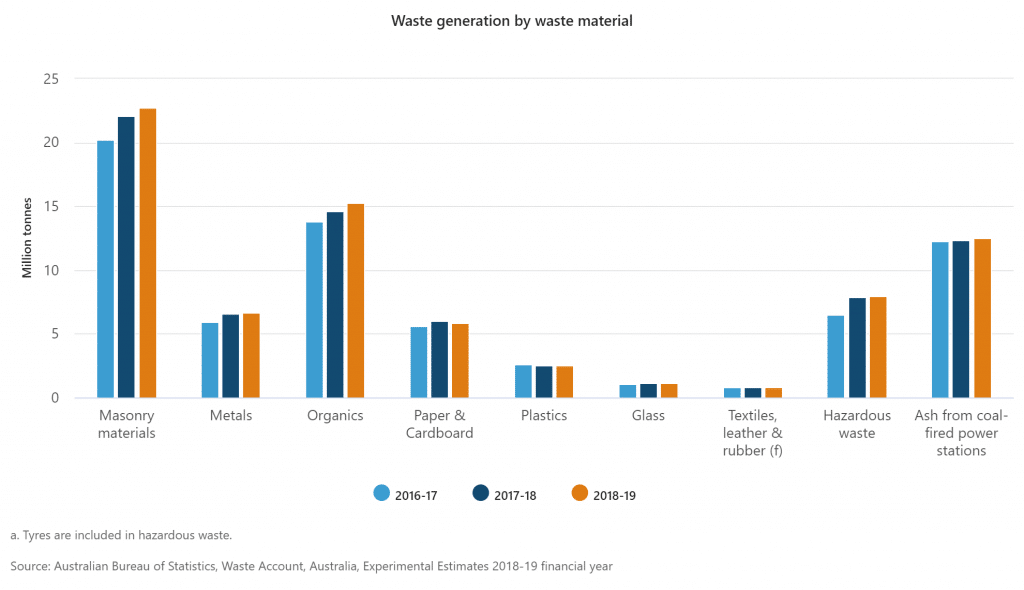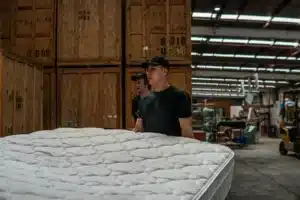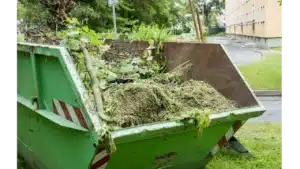WHAT IS LANDFILL?
A landfill site, also known as a tip, dump, rubbish dump, garbage dump, or dumping ground, is a site for the disposal of waste materials. Landfill is the oldest and most common form of waste disposal.
According to the ABS (Australian Bureau of Statistics) Australians generated a massive 76 million tonnes of waste in 2020, a 10% increase since 2016-17. There was $17 billion spent on waste services, an 18% increase since 2016-17.
Government data suggests that there are around 500 officially registered landfill sites in Australia and although the number is declining, the average size of the landfill site is increasing. Approximately 75% of garbage in Australia goes to just 38 sites.
WHAT’S SO BAD ABOUT LANDFILL?
While your junk rots in landfill it is simultaneously creating ‘Leachate’. Leachate from landfill sites contains a variety of different substances, although by far the most significant contaminant is ammonia.
Ammonia and other forms of nitrogen occur naturally in the environment, but concentration levels in leachate are alarming. Decomposition of plant, animal and human waste produces ammonia and many household and industrial cleaning products, including disinfectants, also contain ammonia.
The most alarming thing about any leachate is that their toxic elements can contaminate waterways and surrounding land.
WHAT MATERIALS MAKE UP OUR RUBBISH?
Three major categories of waste products make their way to Australian landfill sites: Plastic waste, organic waste and hazardous waste.

Plastic waste:
- 2.5 million tonnes generated
- 3% of total waste, down from 4% in 2016-17
- Only 9% was sent for recycling (227,000 tonnes), while 84% was sent to landfill (2.1 tonnes)
- 32% of plastic waste was high density polyethylene (HDPE)
- Households were the largest contributor, supplying 47% of all plastic waste (1.2 million tonnes); second was manufacturing at 15% (380,000 tonnes)
- Plastic waste tonnage decreased by 3% since 2016-17
Organic waste:
- 15.3 million tonnes generated
- 20% of total waste
- 42% was sent for recycling (6.4 million tonnes), while 45% was sent to landfill (6.9 million tonnes)
- 37% was food organic waste
- Households were the largest contributor, supplying 42% of all organic waste (6.4 million tonnes); second was manufacturing at 14% (2.1 million tonnes)
- Organic waste tonnage increased by 10% since 2016-17
Hazardous waste:
- 8 million tonnes generated
- 11% of total waste, up from 9% in 2016-17
- 24% was sent for recycling (1.9 million tonnes), while 58% was sent to landfill (4.6 million tonnes)
- Tyres were 6% of hazardous waste
- Manufacturing industry was the largest contributor, supplying 24% of all hazardous waste (1.9 million tonnes); second was construction at 21% (1.7 million tonnes)
- Hazardous waste tonnage increased by 23% since 2016-17
HOW CAN WE LIMIT LANDFILL?
There are a few ways in which Australians can limit their rubbish. JUNK.com.au recommends using these practices in your home on a daily basis. There are certain things we can do to produce less trash and therefore save the environment such as purchasing recycled and recyclable items (that have less packaging), and trying to donate used items.
JUNK.com.au is a rubbish removal service that is committed to reducing landfill wherever possible. Our services are aimed at recycling and reusing as much of your JUNK as possible.
Together, by reducing landfill, we can cut greenhouse gas emissions, protect land and waterways and save the lives of our marine animals.
If you need your rubbish removed and want an environmentally responsible service, choose JUNK.com.au and call us today on 0410 836 312.



